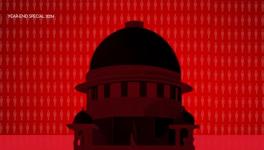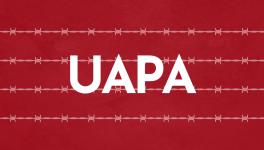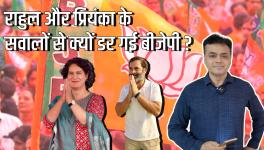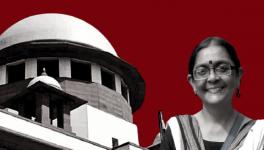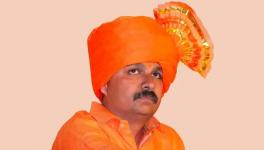Explained: Bombay HC Split Verdict on Govt Fact-Checking Info Shared on Social Media
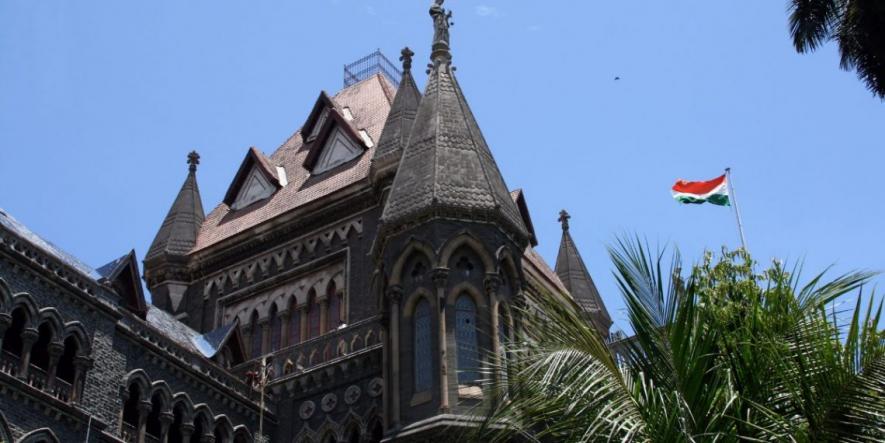
While Justice G.S. Patel struck down the Information Technology (Intermediary Guidelines and Digital Media Ethics Code) Amendment Rules, 2023 which established a government-mandated fact-checking unit, Justice Neela Gokhale upheld it.
—
On January 31, 2024, a division Bench of the Bombay High Court pronounced a split verdict on the Union government’s proposal to have the power of ‘fact-checking’ information shared on social media.
The proposed impugned changes in the Information Technology (Intermediary Guidelines and Digital Media Ethics Code) Amendment Rules, 2023 (IT Rules 2023) give the government the power to establish a fact-checking unit for identifying ‘fake’, ‘false’ or ‘misleading’ content for ‘any business’ of the Union government.
The changes, notified on April 6, 2023, were soon challenged by stand-up comedian Kunal Kamra, followed by a joint petition filed by the Editors Guild of India and the Association of Indian Magazines before the high court. Intervention applications were filed by the News Broadcasters & Digital Association of India.
The changes in Information Technology (Intermediary Guidelines and Digital Media Ethics Code) Amendment Rules, 2023 were soon challenged by stand-up comedian Kunal Kamra and others.
The IT Rules 2023 were challenged for being violative of the fundamental right to free speech and to practice any profession under Articles 14 (equality before law), the right to freedom of speech and expression under 19(1)(a) and the right to practice any profession, or to carry on any occupation, trade or business under 19(1)(g) of the Indian Constitution.
What is the impugned amendment under the IT Rules 2023 in question?
Rule 3(i)(II)(A) and (C) of IT Rules 2023 proposes to modify Rule 3(1)(b)(v) of the Information Technology (Intermediary Guidelines and Digital Media Ethics Code) Rules, 2021 (IT Rules, 2021).
The amendment proposes that the intermediary must make “reasonable efforts” to cause their users, through rules, regulations and other policies to not “host, display, upload, modify, publish, transmit, store, update or share any information” which is “identified as fake or false or misleading by a fact-checking unit of the central government” in respect of “any business of the Central government”.
In 2021, when the IT Rules 2021 came into force, Rule 3(1)(b)(vi) read as: “deceives or misleads the addressee about the origin of the message or knowingly and intentionally communicates any information which is patently false or misleading in nature but may reasonably be perceived as a fact”.
Rule 3(1)(b)(iv) was amended in 2022, whereby it became Rule 3(1)(b)(v), wherein the last sentence was modified as “patently false and untrue or misleading in nature”.
In effect, the impugned Rule as it stands after the 2023 amendment requires social media intermediaries to censor or otherwise modify content that relates to the Union government if the government-mandated fact-checking unit directs them to do so.
On non-compliance with the Rule, the intermediary may lose the safe harbour immunity under Section 79(1) (exemption from liability of intermediary in certain cases) of the Information Technology Act, (IT Act) 2000 and Rule 7 (non-observance of Rules) of the IT Rules 2023.
Intermediaries such as X and Facebook are neutral digital platforms that host online content accessed by users. They are required to observe “due diligence” over the content they host as per Section 79(2)(c).
Losing the safe harbour immunity would make the intermediary liable to prosecution.
Reportedly, it was stated that the fact-checking unit will have four members: a representative from the Union Ministry of Information and Broadcasting, one from the Union Ministry of Statistics and Programme Implementation, a media expert and a legal expert.
What were the grounds for challenge under Kunal Kamra’s petition?
Kamra’s petition stated that the amendment is ultra vires Section 79 of the IT Act. The petition claims it deprives intermediaries of the safe harbour immunity by going beyond the grounds of ‘reasonable restrictions’ which contains the power of curtailment of fundamental rights under Article 19(2) and (6).
The impugned Rule as it stands after the 2023 amendment requires social media intermediaries to censor or otherwise modify content that relates to the Union government if the government-mandated fact-checking unit directs them to do so.
It was further contended in the petition that the proposed amendment violates the fundamental principles of natural justice. His petition states that the amendment is “manifestly arbitrary” because it empowers the government to act “as a judge and prosecutor in its own cause” and does not survive the test of Article 14.
Kamra’s petition also argues that attributing the government the privilege of being the “only watchdog” of fake, false or misleading information is against the rule of law.
He contended in his petition that anointing the government as the “sole arbiter” of “truth or falsity of speech” and that too through an amendment which is “overbroad and vague” constitutes an “unreasonable restriction” on free speech and expression.
He submitted that the amendment goes against the directions of the Supreme Court in Shreya Singhal versus Union of India (2015). In Shreya Singhal, the court held that restrictions on free speech on the grounds of overbreadth or vagueness are unconstitutional.
Kamra’s petition cautioned that there is a potential that this amendment may create a situation where content critical of the government will be particularly vulnerable to being flagged as “misleading” especially when the term “business of the Central government” remains undefined.
In addition, Kamra contended that no opportunity is provided to the intermediary before it would face legal consequences for its non-compliance.
Kamra’s petition states that the impugned amendment goes beyond the power of the Union government to make rules under Section 87 (power of Central government to make rules) of the IT Act.
Lastly, as per the petition, the amendment fails to meet the test of proportionality which requires that the “least restrictive” alternative be chosen when restricting fundamental freedoms.
His petition concludes that the amendment has a ‘chilling effect’ on free speech and expression and is a frontal assault on the ‘marketplace of ideas’.
Kamra’s petition also argues that attributing the government the privilege of being the “only watchdog” of fake, false or misleading information is against the rule of law.
How did civil society react to the amendment?
The non-governmental organisation Internet Freedom Foundation (IFF) said that apart from having a chilling effect on free speech and expression, the amendment potentially bypasses the statutory process of taking down content.
Under the IT Act, Section 69A (power to issue directions for blocking public access to any information through any computer resource) read with the Information Technology (Procedure and Safeguards for Blocking for Access of Information by Public) Rules (Blocking Rules) 2009 provides for the blocking of content online.
Content can also be blocked or restricted through Rule 3 of the Information Technology (Intermediary Guidelines and Digital Media Ethics Code) Rules, 2021. These Rules were later amended to insert the fact-checking amendment.
Prateek Waghre, the Policy Director at the IFF, told The Leaflet when the amendment was notified that the initial draft of the impugned amendment specifically mentioned the Press Information Bureau (PIB) as the fact-checking unit. This was omitted in the notified amendment.
In Shreya Singhal, the court held that restrictions on free speech on the grounds of overbreadth or vagueness are unconstitutional.
He clarified that the role of PIB has historically only been advisory.
On the issue of surpassing the statutory mandate of Section 69A of the IT Act, Waghre said that the fact-checking unit would serve as a “de-facto takedown Order” devoid of procedural safeguards.
It should be noted that the constitutionality of Section 69A was upheld in Shreya Singhal on the grounds that the blocking Rules provide procedural safeguards.
The Leaflet also spoke to Shruti Shreya, a senior programme manager for the platform regulation and gender and technological verticals at The Dialogue, on the overall concerns about the amendment and the verdict.
She opined that in the Shreya Singhal case, the Supreme Court held that the intermediary has to take down the content upon receiving ‘actual knowledge’ and the contours of ‘actual knowledge’ flows from the ‘reasonable restrictions’ under Article 19(2).
However, post the amendment, the intermediary would have to take down the content if the fact-checking unit flags it as ‘false’ which transgresses the ‘reasonable restrictions’ specified in Article 19(2).
Kamra’s petition states that the impugned amendment goes beyond the power of the Union government to make rules under Section 87 (power of Central government to make rules) of the IT Act.
She explained that ‘mere falsehood’ could mandate the intermediary to take down the content if it is flagged as ‘false’ irrespective of whether the content has not caused any “actual harm”.
What did the Bombay High Court say?
The petitions and intervention applications were heard by a division Bench of Justice G.S. Patel and Neela Gokhale.
Justice Patel kept the issue raised in the petitions and the intervention applications to whether the IT Rules 2023 violates the fundamental right to free speech. Is it unconstitutional as being manifestly arbitrary? Is its framing beyond executive authority?
Whereas Justice Gokhale framed six issues: Whether the amendment is ultra vires of Section 79 of the IT Act, leading to the automatic deprivation of safe harbour immunity on grounds beyond the permissible reasonable restrictions under Article 19(2) and contrary to Shreya Singhal’s judgment.
Second, whether it violates Article 14. Third, whether the automatic loss of the safe harbour immunity sends down a chilling effect on free speech to the intermediary and to the user.
Fourth, whether the terms ‘fake’, ‘false’ and ‘misleading’ and ‘business of the Central government’ are overbroad and vague.
Fifth, whether the Rule fails to satisfy the test of proportionality.
Lastly, whether the Rules have a direct nexus with the objective sought.
Justice Patel’s opinion
Justice Patel opined rather clearly that the IT Rules 2023 should be struck down for the following reasons.
He first interpreted Rule 3(1)(b)(v), which calls upon the intermediary to “make reasonable efforts [by itself, and to cause the users of its computer resource to not host], display, upload, modify, publish, transmit, store, update or share any information that deceives or misleads the addressee about the origin of the message or knowingly and intentionally communicates any misinformation or information which is patently false and untrue or misleading in nature [or, in respect of any business of the Central government, is identified as fake or false or misleading by such fact check unit of the Central government as the ministry may, by notification published in the Official Gazette, specify]”.
Internet Freedom Foundation said that apart from having a chilling effect on free speech and expression, the amendment potentially bypasses the statutory process of taking down content.
According to Justice Patel, the clause contains two classes of content.
For the first class of content, which does not deal with the ‘business of the Central government’, the intermediary could receive a takedown notice from users including the government.
The intermediary would have to take down the content but it could be contested in a court of law that the content was not hosted by it intentionally or knowingly. This relates to content that is claimed as “patently false and untrue or misleading”.
For the second class of content, which deals with the ‘business of the Central government’, the intermediary could receive a takedown notice only from the Union government. The intermediary would have to take down the content and it cannot contest it in a court of law on the grounds that it did not host the content intentionally or knowingly.
Justice Patel stated that the 2023 amendment provides that if the fact-checking unit of the government flags a piece of information as fake, false or misleading, the intermediary does not even have a ‘remote’ authority to say otherwise.
On the basis of this, he reiterated that the amendment is an “illusion of choices” and violates the fundamental right to free speech. This is so because it leaves no choice to the intermediary. It does not accord a pre-decisional hearing before stripping off the safe harbour immunity.
Moreover, it does not follow the usual procedure, whereby an intermediary would only be exposed to legal consequences if it does not remove or disable access to ‘identified’ material despite receiving ‘actual knowledge’ of a court Order or being notified by the appropriate government or its agency, as held in Shreya Singhal’s judgment.
Further, Justice Patel looked at the amendment from the concept of the chilling effect defined in Shreya Singhal.
Justice Patel held that the words ‘fake, false or misleading’ do not lend themselves to precise meanings. He stated that the impugned amendment does not fit within the reasonable restrictions permitted under Article 19(2).
Post the amendment, the intermediary would have to take down the content if the fact-checking unit flags it as ‘false’ which transgresses the ‘reasonable restrictions’ specified in Article 19(2).
He also held that the amendment could not be read down to save the provision.
In essence, Justice Patel held: “For this reason, I reject without hesitation the attempt to curtail Article 19(1)(a) buried in the submission that the fundamental right is to ensure that every citizen receives only ‘true’ and ‘accurate’ information— as determined by the government.”
He added: “It is not the business of the government to keep citizens from falling into error. It is the other way around. For it is very much the business and should be the duty of every citizen to prevent the government from falling into error. Governments do not select citizens. Citizens elect governments.”
On the violation of Article 14, Justice Patel stated that establishing a fact-checking unit that only relates to the business of the Union government is not a ‘permissible classification’ within the scope of Article 14. What Article 14 permits is a classification and not a ‘class legislation’, he held.
He stated that the amendment also does not meet the second test of Article 14 which is that there must be a reasonable nexus to the objective sought.
Justice Patel pointed out that the government in itself does not constitute a class of its own when it comes to digital information and it cannot thus be a sole arbiter in this case.
Justice Patel reiterated that the amendment is an “illusion of choices” and violates the fundamental right to free speech.
On the basis of all these considerations, he held that the amendment is unconstitutional.
Justice Gokhale’s opinion
Unlike Justice Patel, Justice Gokhale answered the first issue by reading the words ‘knowingly’ and ‘intentionally’ with the second part of Rule 3(1)(b)(v) which sets out the fact-checking unit.
In her opinion, the mandate of the fact-checking unit is not manifestly arbitrary. Once content has been flagged by users, the intermediary could possibly do two things.
The ‘users’ could be the Union government or one of its ministries. The fact-checking unit is supposed to function as an ombudsman for all content flagged by various government ministries, agencies and institutions.
First, the intermediary could issue a disclaimer stating that the content has been flagged as “patently false and untrue, or misleading” or “false, fake or misleading” if it relates to the business of the Union government.
Issuing a disclaimer would fulfil the due diligence obligation of the intermediary as per Rule 7 because it has made reasonable efforts.
She explained that the fact-checking unit does not confer upon the government the authority to direct the intermediary to take down content. It is merely tasked with identifying information concerning any business related to the government, which is shared through the intermediary.
Second, if the content is to be taken down, the intermediary could approach the court of law contesting the Order on the grounds that it did not host the content knowingly or intentionally. In any case, the takedown has to be done in accordance with Section 69A of the IT Act.
As per Justice Gokhale, the intermediary has discretion in terms of the reasonable efforts it makes to tackle fake, false or misleading content relating to any business of the government.
As per Justice Gokhale, the intermediary has discretion in terms of the reasonable efforts it makes to tackle fake, false or misleading content relating to any business of the government. Therefore, the intermediary is not directly exposed to any penal consequences.
In any case, she noted that the ultimate arbiter is a competent court to determine whether the intermediary is liable or not.
Further, she considered the challenge of the petitioners on the composition of the fact-checking unit as comprising of the representatives of the government as mere apprehension.
Justice Gokhale stated that the constitution of the fact-checking unit is yet to be notified and mere apprehension of it being biased cannot be a ground to challenge the Rule.
On the third issue, she asserted that a plain reading of the Rule does not indicate any direct implication of an intermediary.
Justice Gokhale stated that the Rule has sufficient procedural safeguards such as a mandate to solve the complaint of any aggrieved person through a grievance redressal mechanism.
On the fourth issue of whether the use of the words ‘fake, false or misleading’ and ‘business of the government’ is overbroad and vague, she placed reliance on the dictionary meaning of the terms.
Justice Gokhale stated that “truth is the opposite of fake” and “fake is something which is non-existent”. In this regard, she states that a question of subjective interpretation of fact does not arise because the very fact is ‘non-existent’.
She opined: “Thus, information based on fabricated or non-existent facts falls within the mischief which is sought to be addressed by the impugned Rule.”
Justice Gokhale stated that the Rule only targets offensive information and political satire or parody, criticism, opinion, or views do not form a part of this information.
She further asserted that the term ‘business of the government’ is not vague and referred to the argument made by the State that the terms are mentioned in Article 77 (conduct of the business of the Government of India) of the Constitution.
In essence, Justice Gokhale held that the vagueness of the terms by itself is not sufficient to strike done the entire Rule as ultra vires.
On the last two issues, she held that the grievance of the petitioners rests upon apprehension of the potential abuse of the Rule which cannot be a ground to challenge its constitutionality.
Alternatively, she held that the aggrieved person has a right to approach the court in case of a violation of fundamental rights.
What do the experts have to say about the judgment?
Justice Gokhale has made a distinction between not hosting content and taking it down. She has suggested that the intermediary making reasonable efforts could very well include issuing a disclaimer, which would save it from any legal consequences.
The Leaflet asked if the distinction is workable. Shreya replied it was not. She explained that either the intermediary could take down the content or block access to it by limiting its reach.
If the intermediary decides to take down the content, it will not lose its safe harbour immunity. However, if the intermediary decides to limit the reach of the content, it would still be considered as hosting it.
Further, in cases where the intermediary issues a disclaimer, but does not take down the content or partially blocks it, the intermediary continues to ‘host’ the content, exposing it to legal consequences.
Justice Gokhale considers the challenge of the petitioners on the composition of the fact-checking unit as comprising of the representatives of the government as mere apprehension.
Shreya said that whatever the intermediary does apart from taking down the content, it would loss its safe harbour immunity.
She stated that the mandate of the fact-checking unit is independent of what is prescribed in Section 69A of the IT Act.
Shreya further remarked that even when the intermediary has to reduce the limit of the content, it should only be asked to do so only when the content is actually problematic, for example, when there is a threat to national security or public order.
The Leaflet asked Shreya if there is any power within the parent legislation that allows states to establish fact-checking units.
Recently, Tamil Nadu notified a fact-checking unit. Karnataka and Uttarakhand are in the process of establishing it.
She replied that there is no such power that allows the State to establish fact-checking units.
Shreya said that many of these fact-checking units are established based on certain provisions of the Indian Penal Code, which is problematic because when the special legislation, the IT Act, does not give them such powers then it is not correct to invoke a general legislation for it.
Shreya concluded by recommending that the need of the hour is to have an independent fact-checking body which has representation from all concerned stakeholders.
What would be the next possible course of action?
The Leaflet also spoke to advocate Radhika Roy who works at the IFF. The IFF provided legal assistance to Kamra and the Association for Indian Magazines.
Roy said that the IFF continues to be stoutly against the fact-checking unit.
The IFF has filed an application on behalf of the Association for Indian Magazines seeking an extension of the statement of the Union government that it would not notify the IT Rules 2023.
Roy stated that the IFF is looking forward to the matter being heard by a larger high court Bench. She said that if the court decides to uphold the amendment, the next possible recourse would be to challenge it before the Supreme Court.
Click here to read the order
Gursimran Kaur Bakshi is a staff writer at The Leaflet
Get the latest reports & analysis with people's perspective on Protests, movements & deep analytical videos, discussions of the current affairs in your Telegram app. Subscribe to NewsClick's Telegram channel & get Real-Time updates on stories, as they get published on our website.









